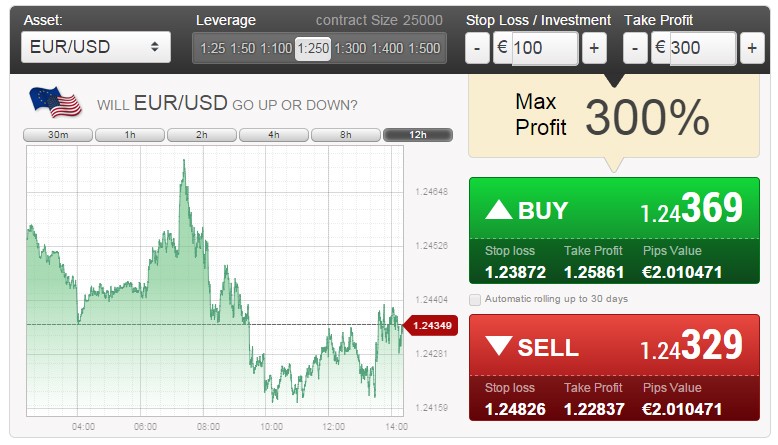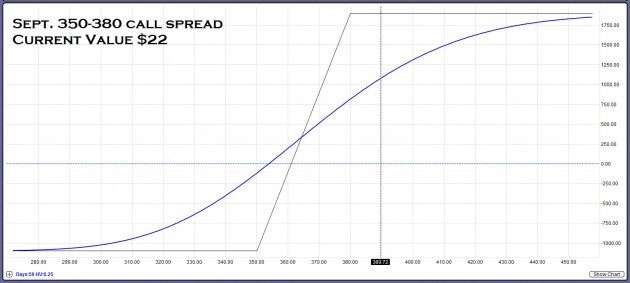How to Roll Options Positions
Post on: 9 Июль, 2015 No Comment

Rolling Can Help You Dodge Assignment
Rolling is a way of trying to put off assignment (or avoid it altogether). Its a time-grabbing play, essentially, but its not one to enter into lightly. Rolling can get you the extra time you need to prove out your opinions, but it can also compound your losses.
You can roll short or a long position, but for the purposes of this discussion well focus on the short side.
Click here to learn how to utilize Bollinger Bands with a quantified, structured approach to increase your trading edges and secure greater gains with Trading with Bollinger Bands® A Quantified Guide.
Our First Example: Rolling a Covered Call
Lets imagine youve sold a covered call according to the following terms:
Stock XYZ at 87.50
Sold 1 30-day 90 Call at 1.30
XYZ moves against you to 92
In case youre not familiar: writing a covered call involves selling a call for an underlying stock that you already hold. You earn a premium for selling the call, but you also take on an obligation: to sell the underlying stock at the strike price if youre assigned. Because you already hold the shares, your obligation is covered you can always just hand over these shares, which is much less risky than trying to buy shares in a market where prices are probably rising. (Rising stock prices are probably why the call owner exercised their right to buy anyway.)
When the call is first sold, your potential profit is limited to the strike price minus the current stock price plus the premium received for selling the call. As for your max potential loss, its trickier to quantify. You receive a premium for selling the option, but most downside risk comes from owning the stock, which may potentially lose its value. However, selling the option does create an opportunity risk. That is, if the stock price skyrockets, the calls might be assigned and youll miss out on those gains.
When we put on this trade, the goal was for the stock to reach 90 and be called away, but now our view has changed and wed like to avoid being assigned. Since the stock is now in-the-money (ITM), at expiration we will most likely be assigned. Lets assume you see some more upside in the stock going forward. If only you could buy yourself a little more time, maybe you could prove your assumptions correct and eek out a little more profit on the stock.
Rolling is one way to respond to this situation. Specifically, were looking at two choices to dodge that potential assignment:
- You can buy back and close the 90 call you sold, taking a loss on the call, but leaving you long stock with unlimited upside going forward.
- The other option is to roll the short call roll up in strike and out in time. To do this we will enter an order to buy to close the short call and the sell to open a new call. The new option will have a higher strike price and go further out in time. Moving up in strike will lower the premium received for a short call, but going out in a time will increase the premium. The net effect, we hope, will be a credit to the account for the entire trade. (Check out the example in bold below.)
Dont forget to factor commissions into whichever choice of the two you pick. Depending on your online broker, commissions for scenario #1 can be as low as $5.60, for scenario #2 $11.20.

If you buy back the 90 call, that will cost you $2.10 resulting in a net loss of INITIAL_CONTENT.80 on the trade ($1.30 $2.10). If you roll up and out, you can help offset the cost of buying back the call by choosing a strike price thats higher (up) and further out in time.
If you decide to roll, youd enter the following spread trade with two parts:
Buy to close the front-month 90 call -2.10
Sell to open a 95 call thats 60 days from expiration +2.30
= 0.20 net credit for the roll
Good News and Bad News
Rolling helped you secure a INITIAL_CONTENT.20 net credit to add to your initial premium received for selling the covered call (1.30). If all goes well, your 95 call will expire worthless in 60 days, and youll keep 1.50 in net credit.
Thats the good news, but keep the potential bad news in mind, too. Every time you roll, you may be taking a loss (2.10 1.30 = .80 in this example) on the front-month call. Youre also tacking on even more time to your trade, in which your stock turned course and headed lower. If the stock loses more value than the net credit received for the roll, in the big picture youd be down for the whole trade.
Rolling can be useful, but you should definitely go in with your eyes wide open.
Brian Overby is Sr. Options Analyst at TradeKing. an online options and stock broker. Brian appears frequently on CNBC, FOX Business, Bloomberg, and other financial media and is the author of the award-winning TradeKing Options Playbook. Check out Brians Options Guy blog and other actionable market commentary at community.tradeking.com .
Options involve risk and are not suitable for all investors. Please read Characteristics and Risks of Standardized Options. While implied volatility represents the consensus of the marketplace as to the future level of stock price volatility or probability of reaching a specific price point there is no guarantee that this forecast will be correct.
Any strategies discussed or securities mentioned, are strictly for illustrative and educational purposes only and are not to be construed as an endorsement, recommendation, or solicitation to buy or sell securities. TradeKing provides self-directed investors with discount brokerage services, and does not make recommendations or offer investment, financial, legal or tax advice.














